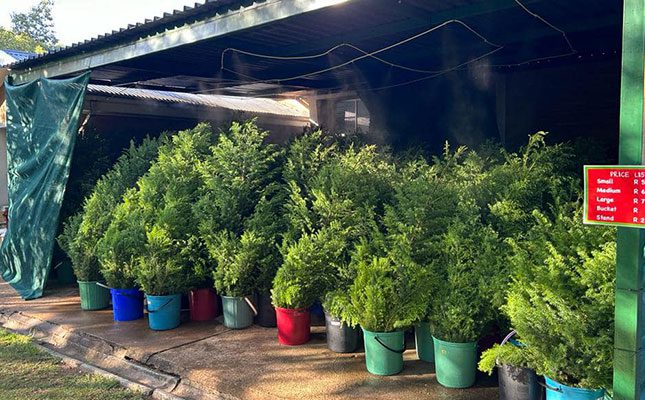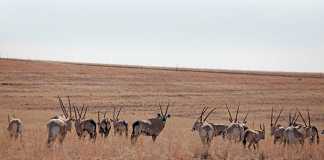
Photo: Lindi Botha
But anyone who has ever attempted to adorn such a tree quickly realises that all pines are not equal.
“The pines trees grown commercially are rather sparse as the focus is on growing wood, not side branches and leaves,” explains Matthew van den Boogaard, owner of the Christmas Tree Farm in Hilton, KwaZulu-Natal.
READ Fir the love of Christmas trees: farming spruces in the UK
“This is why we rather grow Japanese cedars as they provide, full, bushy trees that are the prefect Christmas tree shape.”
Van den Boogaard took over the family Christmas tree business three years ago when he inherited the family plot on which they grow. Although demand has picked up, the business remains a sideline, providing income for only two weeks in the year, while requiring 12-month care.
“It’s a feast or famine business. The trees need a lot of care when they are first planted, and only have about a 60% survival rate. They are finicky and sensitive to dry spells. It then takes four years before we harvest a tree. At this stage they are around 4m in height, and since most people want a tree of 2,5m, we only sell the top half. But it is necessary to wait for four years because only at that stage has the tree plumped out.”
He explained that the business had two open weekends in December where buyers could choose their trees, which were then cut down. The benefit of this system was that if any trees were not sold, they could continue growing until the next year.
READ Growing a pecan tree in your garden
Bad weather could however influence sales, and Van den Boogaard said that this could drastically influence annual turnover.
Taking the retail route, Kathy Nel, owner of Real Christmas Trees in Johannesburg, has been selling live Christmas trees for over 20 years. Her Japanese cedars are sourced in KwaZulu-Natal.
She labels the business as ‘risky,’ with low margins. “If the trees don’t sell, it is a loss. People often ask for trees with roots in a pot, but this is not feasible since it impacts transport costs. The trees can’t be grown in the pots since they require far more space for their roots, so it needs to be an annual purchase.”
Nel noted that historically South Africans had been happy using fake Christmas trees, and that the diplomatic community were her biggest clients for live trees. Today, the demand has picked up, with repeat business increasing. “Once you have had a real Christmas tree, you will never go back to the fake ones.”
Nel and Van den Boogaard however maintain that the market is limited, and margins slim. Nel said that the undertaking was a beloved family holiday project, more than a money spinner.
“My children and their friends get the opportunity to learn business skills and they earn some pocket money.”
Van den Boogaard also noted that suppliers had increased as the market had grown, limiting an income increase.
Trees sell for around R550 for a 1,5m tree, going up to R750 for a 2,1m tree.
As a side hustle, Christmas tree farming could be viable for landowners with spare land on which other crops can’t grow, but where trees will survive. But the initial four-year wait for the first harvest and the sole two weeks in which income is generated, means Christmas tree farming is not as easy as many driving by forestry plantations would like to believe.
RECIPE: Turkey for Christmas lunch











